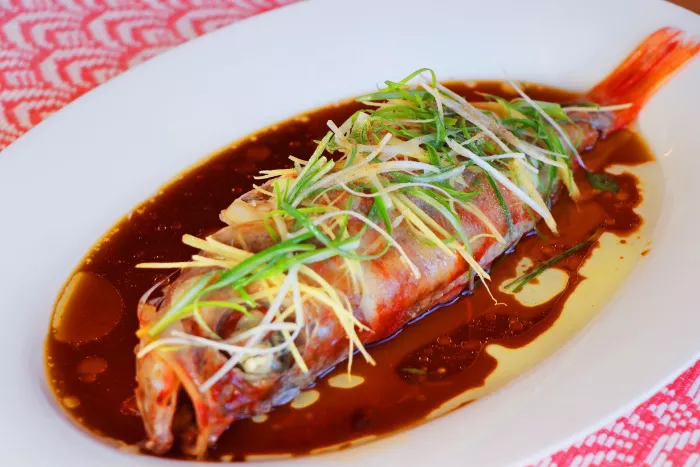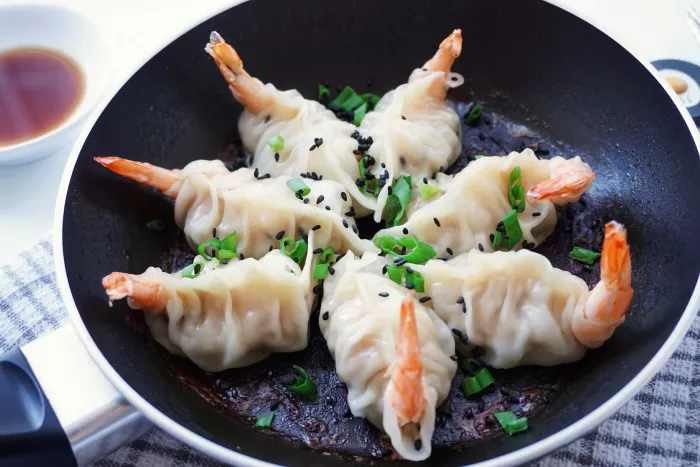Chinese-style steamed fish is a culinary masterpiece that has graced the tables of Chinese households for generations. This traditional cooking technique brings out the natural flavors of the fish while infusing it with the delicate aromas of ginger, scallions, and soy sauce. In this comprehensive guide, we will embark on a journey to master the art of preparing Chinese-style steamed fish, from selecting the finest ingredients to mastering the techniques that result in a delightful, tender, and flavorful dish.
The Essence of Chinese-Style Steamed Fish
Chinese cuisine is renowned for its delicate balance of flavors and textures, and steaming is a cooking method that perfectly captures this essence. Chinese-style steamed fish is not only about taste but also about maintaining the fish’s texture and the simplicity of the dish. The steaming process preserves the fish’s natural juices, resulting in a tender, moist, and savory delight.
Choosing the Perfect Fish
The foundation of any great Chinese-style steamed fish is, of course, the fish itself. The ideal fish for steaming is one that is fresh, firm, and relatively mild in flavor. Some popular choices include sea bass, tilapia, snapper, and trout. When selecting a fish, ensure that it is gutted, scaled, and cleaned, leaving the head and tail intact for a traditional presentation.
Preparing the Fish
Once you have chosen the perfect fish, you will need to prepare it for steaming. First, give the fish a thorough rinse and pat it dry with paper towels. Next, make shallow diagonal cuts on both sides of the fish. These cuts help the fish to cook evenly and absorb the flavors of the seasonings.
Infusing Flavor: The Aromatics
Chinese-style steamed fish is all about subtle yet impactful flavor. Aromatics play a crucial role in infusing the fish with fragrance and depth. Traditional aromatics include:
Fresh Ginger: Ginger slices or julienned ginger provide a warm, zesty aroma that complements the fish’s natural sweetness.
Scallions: Green onions, especially the white parts, add a mild, onion-like flavor and a touch of color to the dish.
Soy Sauce: A drizzle of soy sauce enhances the savory character of the dish and contributes to its signature gloss.
Sesame Oil (Optional): A few drops of sesame oil add a rich, nutty dimension to the flavor profile.
The Steaming Setup
To successfully steam fish Chinese-style, you’ll need a proper setup. You can use a steamer, a wok with a steaming rack, or even a regular deep pan with a lid. The key is to ensure that the fish is placed above the water level, allowing the steam to gently cook it. It’s important to have a tight-fitting lid to trap the steam and create an even cooking environment.
A Perfect Steaming Time
The key to achieving a perfectly steamed fish is to get the timing right. Fish cooks relatively quickly when steamed, and overcooking can result in a dry and less flavorful dish. As a general rule, for a whole fish, allow approximately 10 minutes of steaming time for every inch of fish thickness. For fillets, reduce the steaming time accordingly.
Dress to Impress: Presentation
Chinese-style steamed fish is not just about flavor; it’s also about the visual appeal. To create an eye-catching and appetizing presentation:
Place the steamed fish on a serving platter.
Garnish with fresh cilantro leaves or sliced scallions to add color and a burst of freshness.
Heat a small amount of vegetable oil or sesame oil until it sizzles, then drizzle it over the fish to create a beautiful sheen.
Serving and Enjoying
Chinese-style steamed fish is traditionally served family-style, with everyone enjoying from the same platter. It is often accompanied by steamed jasmine rice to absorb the delectable juices. To savor the dish fully, use chopsticks or a fork to separate the tender fish meat from the bones, and pair each bite with a small amount of ginger, scallions, and soy sauce.
Variations and Flavor Profiles
Chinese cuisine is diverse, and there are numerous regional variations of steamed fish. Each region has its own flavor profile, with unique ingredients and seasonings. For instance:
Cantonese-Style Steamed Fish: The Cantonese version often features a simple combination of soy sauce, ginger, and scallions. It’s known for its pure and delicate flavors.
Szechuan-Style Steamed Fish: Szechuan cuisine brings the heat with ingredients like spicy chili bean paste and Szechuan peppercorns, creating a dish that’s both spicy and numbing.
Shanghai-Style Steamed Fish: Shanghai cuisine introduces elements like Shaoxing wine, black beans, and a hint of sugar to create a sweet and savory balance.
Hunan-Style Steamed Fish: Hunan cuisine embraces bold and spicy flavors with ingredients like dried red chilies and fermented black beans.
Conclusion
Chinese-style steamed fish is a culinary masterpiece that showcases the essence of Chinese cuisine—subtle yet impactful flavors, tender and moist texture, and a deep appreciation for fresh ingredients. As you embark on your journey to master this traditional dish, you’ll not only create a delightful culinary experience but also discover the rich cultural and culinary heritage that makes Chinese cuisine so beloved worldwide.



























